Pedestrian crossings
You must give way to pedestrians at pedestrian crossings on NSW roads. Here are the rules you must follow, and different types of crossings to watch for.
Slow down at pedestrian crossings
Pedestrian crossings are marked by signs and lines on the road. There are different types of pedestrian crossings, each with different rules for drivers.
When approaching a pedestrian crossing, you should drive at a speed that allows you to slow down and stop before the crossing.
If children or elderly people are crossing, you may need to give them extra time to cross.
Always slow down and prepare to give way to pedestrians.
Pedestrian crossing lines and signs
Pedestrian crossings are usually marked by white parallel stripes on the road. They can also have a yellow sign showing a pair of legs.
Pedestrian crossings are also called zebra crossings.
Some pedestrian crossings have signs warning you that you’re approaching a crossing.
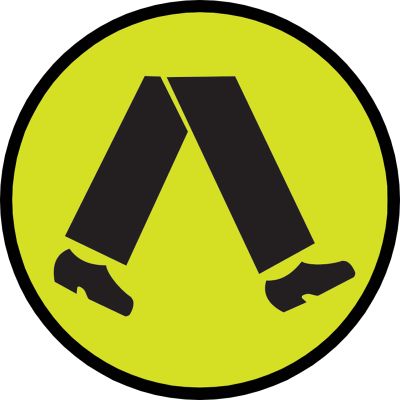
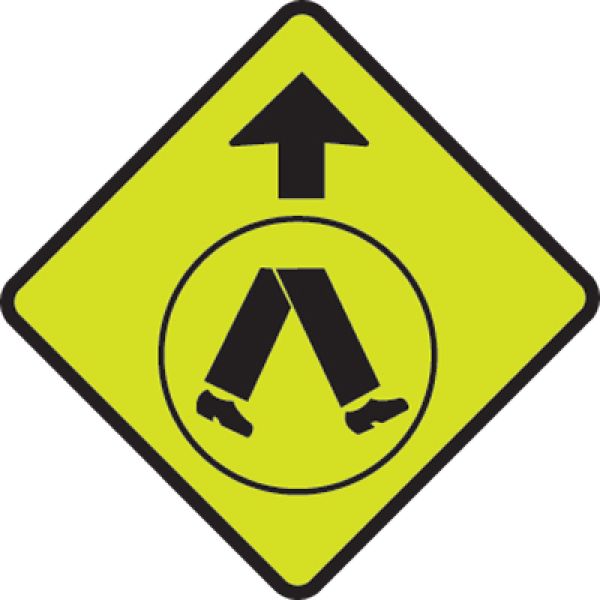
Zig-zag lines are sometimes marked on the road leading up to pedestrian crossings. These lines increase visibility and warn you that you’re approaching a crossing.
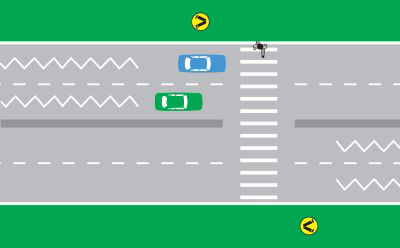
At a pedestrian crossing:
- you must give way to pedestrians crossing
- you must not overtake a vehicle that’s stopping or has stopped to give way to pedestrians who are crossing
- you must not drive onto the crossing if the road ahead is blocked.
If there’s a ‘Stop’ sign close to the crossing, you must stop at the sign, even if you just stopped at the crossing.
Pelican crossings
A pelican crossing is a pedestrian crossing with traffic lights. Pedestrians push the button when they want to cross.
Most pelican crossings have the same lights and pedestrian signals as normal traffic lights. You must stop at a red light and give way to pedestrians crossing the road.
Some pelican crossings have a different colour sequence for the traffic lights. After the red light, a yellow (amber) light flashes for vehicles and a red pedestrian signal flashes for pedestrians.
When the yellow light starts flashing, you can drive through the crossing if there are no pedestrians.
Children’s crossings
Children’s crossings are part-time crossings. They usually operate during school zone hours, and at other approved times and locations.
When a children’s crossing is operating, it’s marked by red‑orange flags at both sides. When you see the flags, you must slow down and stop before the white stripes or ‘Stop’ line to give way to pedestrians. You must remain at a complete stop until all pedestrians have left the crossing.
If the flags are not displayed, it’s not operating as a children’s crossing.
Some children’s crossings are combined with a pedestrian crossing. When the flags are displayed, children’s crossing rules apply. When the flags are removed, pedestrian crossing rules apply.
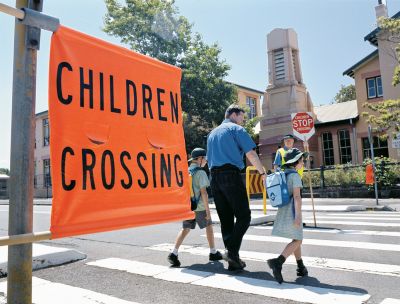
School crossing supervisors
Some children’s crossings are controlled by school crossing supervisors. When you see a supervisor holding a ‘Stop – children crossing’ sign, you must slow down and stop.
You must remain at a complete stop until:
- all pedestrians have left the crossing, and
- the school crossing supervisor is no longer showing the sign.
High pedestrian activity areas
Some areas have more pedestrians than others, such as shopping strips and near schools, parks or swimming pools.
These areas may have a lower speed limit and signs warning you to look out for pedestrians.
When you see these signs, you should prepare to slow down.

Pedestrian refuges
A pedestrian refuge is an island in the middle of the road. The island allows pedestrians to cross the road in two stages.
Pedestrian refuges have signs to warn you to slow down and look out for pedestrians.
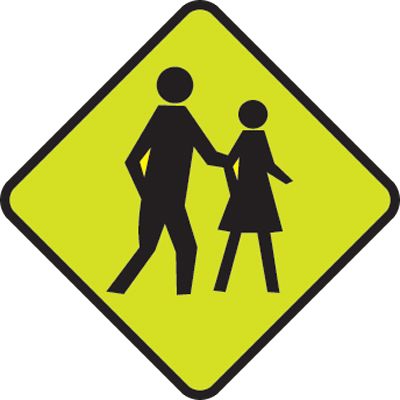
Giving way to pedestrians when turning
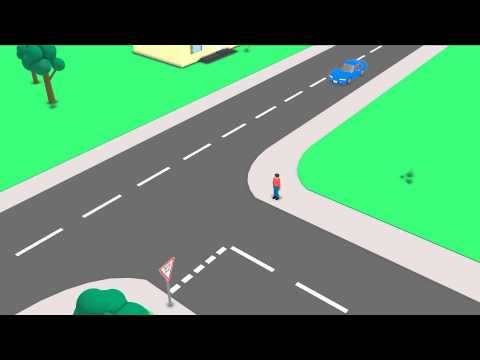
Road rules: pedestrians
Revise rules on giving way to pedestrians when turning in this short Transport video animation.